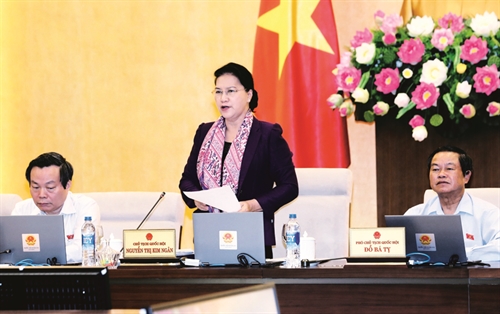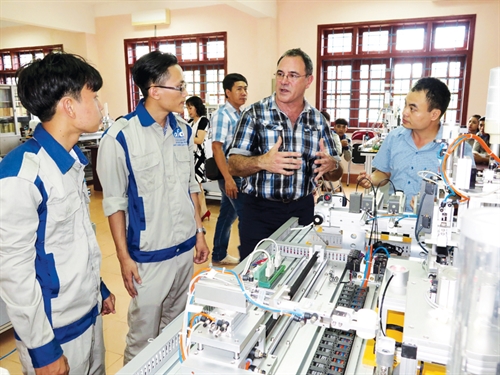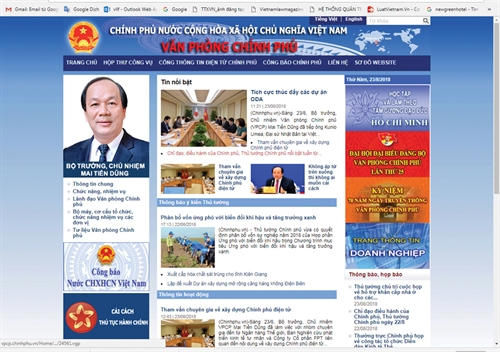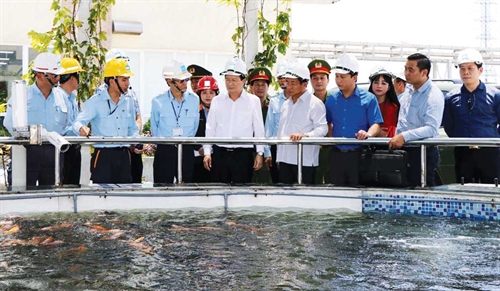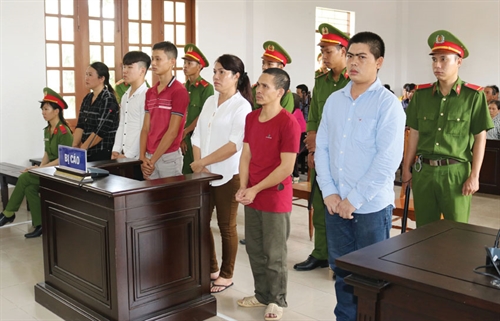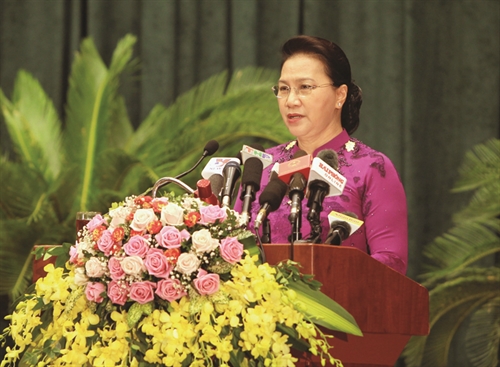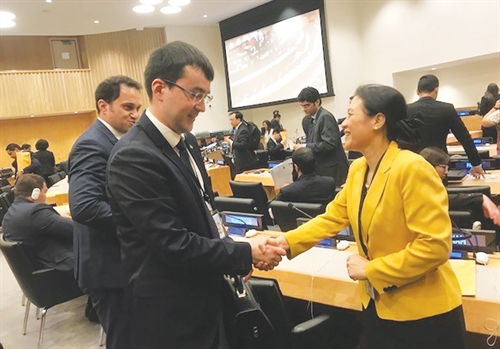Phung Xuan Nha
Minister of Education and Training
Background of the Fourth Industrial Revolution
The Fourth Industrial Revolution has spread worldwide as a result of the unprecedented effects of the pace of development and impact of technology breakthroughs. Innovations and scientific advances are present in all fields, such as artificial intelligence (AI), robotics, the Internet of Things, fully autonomous vehicles, biotechnology, nano technology, 3D printing, material science, quantum computing, etc., and affect almost every industry at such a rapid speed that the Fourth Industrial Revolution is said to be evolving at an exponential pace[1].
The Fourth Industrial Revolution plays an important role in creating products and services that allow us to live a better life. On the contrary, this revolution could also lead to even higher inequality when new technologies replace labor-intensive jobs. This is considered the biggest challenge posed by this revolution. In addition, another challenge is how to create higher-skilled jobs for people when automation has replaced and is replacing manual labor in a myriad of everyday tasks[2].
Thus, the phrase “industrial revolution” implies a significant change, not only economic, but also cultural and social transformation in a comprehensive way. Vietnam is moving rapidly from the “golden population” structure to aging population. The Fourth Industrial Revolution should be seen as an opportunity for Vietnam to increase productivity on the basis of scientific and technological applications, effectively utilizing the current “golden population” structure. It is certain that education and training will play a key role in addressing this enormous challenge.
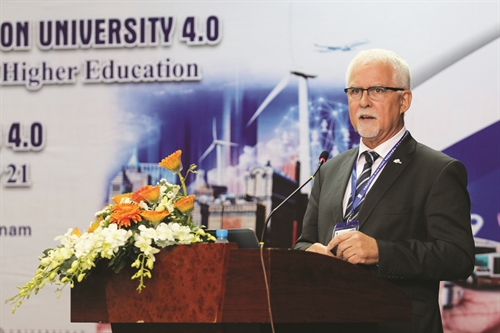 |
| Professor Gottfried Vossen from German Munster University speaks at a conference themed “University 4.0 - A framework for 21st Century Higher Education” in Ho Chi Minh City on July 20, 2017 __Photo: https://baochinhphu.vn |
Impacts of the Fourth Industrial Revolution on education
One of the necessary preparations for the Fourth Industrial Revolution is to improve human resources so as to meet the ever-changing knowledge and skills requirements in the new working environment. This has set for the education and training sector a big mission which is to prepare human resources to meet the national development requirements. An issue that many countries have realized and taken on is to shift from an education that heavily equips students with knowledge and skills to an education that helps promote their competence, innovation and creativity, meeting the requirements set for citizens by the Fourth Industrial Revolution[3].
With the emergence of new learning paradigms and the development of science and technology, traditional educational methods will certainly face many challenges.
One of the striking features is personalized learning. Each student has different learning needs and abilities. Technological advances now allow educators to design personalized learning plans suitable to each specific case. Educational software can be adapted to fit the ability of every student and allow students to learn at a pace that suits their needs. In a number of countries, these adaptive learning software have partially or completely replaced textbooks in the classroom.
Besides, access to information has become easier than ever, leading to a question that educators need to answer, that is to identify the core knowledge that students need to be equipped in the future. While the past education models focused on providing students with knowledge and skills necessary for them to become highly skilled workers, educators today pay more attention to teaching students how to self-study. Education teaches students how to think and how to evaluate situations and complex issues in life, thereby building their problem-solving capacity.
Technology development has a great influence on the teacher’s role in the classroom. The technology-aided school administration system can provide data that help teachers keep track of the progress of each classroom and take immediate response to difficulties encountered by students. Yet, modern technology cannot replace teachers or turn teachers into robots. Therefore, how to utilize and master technology as a tool to support and help create freedom and creativity in education is a challenge for every teacher and educational institution.
The above changes are suggestive of how educational models can work in the future: computers are used as personal support tools in the classroom with a variety of learning plans; teachers and parents are better equipped to understand the learning process of students; classes are divided into small groups of students with similar capabilities and skills to work together.
Challenges and opportunities for Vietnam’s education
With the prospective development of education in the context of the Fourth Industrial Revolution, Vietnam’s education has fundamental advantages to embrace the opportunities brought about by this revolution.
The Party and State of Vietnam have always tried to anticipate challenges in education for future generations. On November 4, 2013, the 8th Plenum of the 11th Party Central Committee adopted Resolution No. 29-NQ/TW on radical and comprehensive reform of education and training to meet requirements of modernization and industrialization in the context of the socialist-oriented market economy and international integration. The guiding viewpoint on educational reform set out in the Resolution is: “To strongly shift the educational process from mainly equipping knowledge to comprehensively developing students’ capabilities and qualities. Learning must go along with doing; theory combined with practice; school education combined with family and social education.” On May 4, 2017, the Prime Minister issued Directive No. 16/CT-TTg on enhancing the capability to embark upon the Fourth Industrial Revolution, which introduces many important solutions. In particular, the Prime Minister ordered a dramatic change in policies, contents and methods of education in order to create human resources capable of accommodating new production technology trends. On May 5, 2017, the Ministry of Education and Training (MoET) sent Official Letter No. 1891/BGDDT-GDDH to all higher education institutions to guide the training of human resources adaptable to the Fourth Industrial Revolution. From 2018, this will serve as one of the basic contents for the evaluation and orientation of the development of the education and training sector.
Besides, one of the fundamental advantages for the country’s education to embrace the development opportunities is that the Vietnamese society always attaches importance to learning. We have always been appreciated in creating a positive learning environment, ensuring school discipline and helping students adopt a good learning attitude. Parents’ involvement and encouragement to students is also a positive element in the formation of a learning society.
Another advantage is that education administrators and teachers, who play a key role in education reform, have constantly received attention, investment and support in capacity building. Professional standards and norms of administrators at all levels and teachers will be issued soon to serve as the tools to support the capacity building of education administrators and teachers to meet requirements in the new period.
Despite concerns that Vietnam’s curriculum is not associated with practice, the high results in the PISA test, the Intel International Science and Engineering Fair (Intel ISEF), and international and regional Olympiads have affirmed that our education has started moving, focusing on students’ use of knowledge to solve practical problems, rather than just learning by heart textbooks. This result also demonstrates the potential of Vietnam’s human resources in the fields of math and science if properly invested.
In addition, Vietnam’s curriculum always emphasizes on helping students gain a deep understanding of core concepts and the ability to master knowledge. The new general education curriculum, which will be launched in 2019, moving from knowledge acquisition to quality and capability development, will lay the foundation for a radical and comprehensive reform of general education.
Over the past time, the MoET has delegated more autonomy to schools in the implementation of curriculum, test and evaluation. These innovations have brought about positive effects in Vietnam’s education quality. In the recent World Bank Report entitled Growing Smarter: Learning and Equitable Development in East Asia and the Pacific[4], Vietnam and China are considered as pioneers in education reform, having a truly impressive education system, and can become good practices for other countries.
Some orientations for Vietnam’s education
In the new wave of industrialization, the education system must focus on developing students’ qualities and competences by directing the most appropriate paths for different groups of students to help them promote their own potential. This should be applied at all education and training levels. For higher education, the success of a university is not just the rate of graduates, the ability of students to find a job or the spot on the international rankings, but also the sustainable and long-term development of students, their willingness to take risks and their innovation capacity and creativity.
To do so, we should affirm the importance of an educational system supporting lifelong learning. The entire educational system must recognize the variety of strengths and talents of young people. We can only develop a new generation with stuff, ability of self-orientation and persistence in pursuit of their goals if they show passion in their learning process.
Following are some guidelines for Vietnam’s education in the context of the Fourth Industrial Revolution.
First, to combine teaching and learning with practice.
Education needs to simulate and prepare students to enter into life as much as possible when technology has made access to knowledge easy so knowledge is no longer meaning “insurance” for the future of students as before[5]. An appropriate approach is to promote the science, technology, engineering and mathematics (STEM) education in schools. Accordingly, students will be equipped with knowledge coupled with applications in practice. They can experience, explore and discover technology associated with the knowledge learned from the curriculum; and are encouraged to be creative in science and technology in order to develop new technologies. This is an interdisciplinary approach aiming to equip students with knowledge and skills which they can apply to solve problems in their lives.
The MoET has piloted STEM education at 15 lower and upper secondary schools in Hanoi and Hai Duong, Hai Phong, Nam Dinh and Quang Ninh provinces. The pilot results show that STEM education directs students to search for local ideas and after-school clubs, and make a change in the way science is taught and learnt.
Second, to diversify educational schedules.
Each student has different learning needs and abilities and the task of education is to discover, nurture and motivate students to identify and pursue their interests and passions. This requires the education system to provide diverse educational schedules that cater to the individual learning needs and learning styles. The new general education program has undergone fundamental changes with the integration of contents in primary and lower secondary education, a strong division in upper secondary education, and increased vocational guidance and streaming in general education.
Third, to encourage lifelong learning.
One of the most important goals of education is to discover and nurture talents, encourage the pursuit, passion and lifelong learning needs of students. To achieve this goal, a major change should be made to restructure the system of continuing education centers and community-based learning centers, changing these traditional patterns to build lifelong learning centers. This is also the key solution to implementing the radical and comprehensive education reform, “improving the national education system toward an open education system, lifelong learning and building a learning society,” as set out by Resolution No. 29-NQ/TW of the 8th Plenum of the 11th Party Central Committee.
Fourth, to promote teaching and learning foreign languages, particularly English; to step up the application of information technology in learning and management.
The MoET has submitted to the Prime Minister for issuance a decision approving adjustments to the Scheme on Teaching and Learning Foreign Languages in the 2017-2025 period[6] with a number of orientations, such as “make a breakthrough in the quality of teaching and learning foreign languages at different education and training levels, encourage the introduction of foreign languages into schools from kindergartens and social activities. Further integrate foreign languages teaching in teaching and learning other subjects (such as math and sciences, specialized subjects…). Step up the application of advanced technologies in teaching and learning foreign languages with online learning resources suitable to all target groups of students so that they can learn foreign languages, access to native languages anytime, anywhere, by any means, especially in developing their listening and speaking skills. Create a foreign language learning environment in the school, family and society so that teachers, lecturers, family members and students can together learn foreign languages.”
In addition, the education program of Vietnam should ensure that students are equipped with digital and technological knowledge at all levels of education to facilitate their access to scientific and technological advances. In the new general education curriculum, foreign languages and computer science have become compulsory subjects from the first grade of primary school.
Special importance should be attached to the application of information technology in education administration. The education sector has been promoting the computerization in administration work, determined to build a communication system that ensures smooth communication between the MoET and education and training institutions, and build a common database of the whole sector.
 |
| Primary and lower secondary school students at a ceremony to begin a new school year in Suoi Quyen commune, Van Chan district (Yen Bai province)__Photo: Duc Tuong/VNA |
Fifth, to build capacity and heighten the role of universities.
In order to enhance the competitiveness of human resources, in addition to constantly improving their scientific research and teaching capabilities, universities must be pioneers in promoting innovation and creative startup. Their impacts should no longer be limited to educating and changing the lives of students. They should now serve as a launching pad for future entrepreneurs and startups to keep pace with the development of industries. The MoET has recently submitted to the Prime Minister for issuance a decision approving a scheme to support students’ startups by 2025[7]; directed higher education institutions to renovate training programs, involving administrators and employers; developed and published training program outcome standards; supported the coordination between higher education institutions and businesses and employers in training; and directed universities to increase cooperation with businesses in order to link training with domestic and foreign labor market demands.
Higher education institutions should also proactively embrace the trend that training highly skilled workers will not be limited to four or five years, but throughout their working lives, and students will return to school to gain more knowledge and skills after graduation. Thus, the old thinking of pre-emptive education will change when universities regard lifelong learning as part of their mission. To help higher education institutions bring into play their proactivity and creativity, improve their performance and competitiveness and diversify education and training forms to meet the demand for human resources, the MoET has expeditiously drafted a law amending a number of articles of the Law on Higher Education to be submitted to the National Assembly for passage and continues to improve legal documents guiding the implementation of the Law after it is approved.
The Ministry has also presented to the Government a decree on university autonomy in replacement of Resolution 77/NQ-CP, formalizing university autonomy as an inevitable path of higher education in Vietnam.
In conclusion, in order to be successful in the coming decades, the education sector needs to have a farsighted vision in the context of continuous transformation of organizational patterns and skills requirements. Accordingly, future workers will need to engage in lifelong learning to be ready for change. Current educational institutions are mainly products of technological infrastructure and social circumstances of the past. In the rapidly changing context, educational institutions should have new perspectives to improve their responsiveness. Agencies and businesses should adapt to the changing environment and need to realize the importance of developing a human resources development strategy toward sustainable development through collaboration with higher education institutions.
In order to prepare for future generations and increase the competitiveness of the Vietnamese people, we need to build a system of education that fosters innovation and creativity, emphasizing on the importance of lifelong learning and longer-term development of students. Moreover, effective budget allocation coupled with a strong political will to education and training will make a difference for the future of Vietnam’s young generations.-

